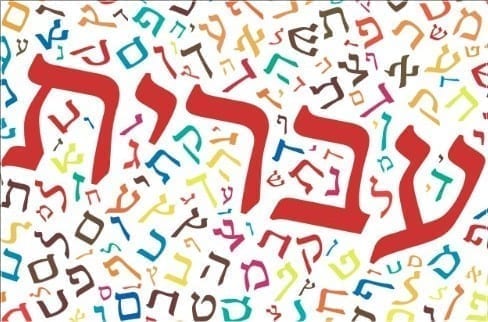
The tabletop was made of particle board, brown laminated, with a flexible black plastic trim that fit into a groove running around its edge. It was satisfying to pull the black trim out of the groove and push it back into place. If you did this long enough, the particle board would begin to flake apart and the groove would lose its grip on the plastic. That’s one of the main things I remember about Hebrew school. There was also a Torah scroll in an elaborate Lucite display case. It was from a certain town in Europe that was destroyed in the Holocaust. Across from that was a long wall covered in gold-colored leaves with a big gold tree trunk in the middle. I knew where to find my grandfather’s leaf. It was at the leftmost end toward the bottom. A little beyond my grandfather’s leaf was a carpeted staircase leading down. I’m not sure what that stairway led to, but the stairway itself was a good place to hide. The East Northport Jewish Center was full of good places to hide. There was the carpeted stairwell and the sad playground, which was always deserted. There was also a large wooded area next to the parking lot where you could see the neighbor’s lawn, full of wrecked cars and sometimes an old boat. Steve Kantrowitz and I used to go there and hang out when we were supposed to be learning to read Hebrew. We didn’t learn to read Hebrew. The main sanctuary, as it was called, had maroon carpeting, and on Yom Kippur the panels that made up the back wall were slid open on a track and the social hall was filled with hundreds of rented folding chairs to accommodate the crowd. Yom Kippur was interesting for a while, but once you inspected the donation cards and the program and stared at the stained glass for a while, you could drift out to the playground, where there were suddenly a lot of other preteens you didn’t recognize.

Of course, there were also kids you knew from Hebrew school, like Mark Weiner, who actually did learn to read Hebrew. He’s a dog walker now, in West Orange, I think. Anyway, Yom Kippur was sort of a big deal. The parking lot overflowed, and nonGerman luxury cars were parked about half a mile up Route 10. Sukkos was strange and awkward. Purim, fun and awkward. Shavuos? I never even heard of it until I was frum. But Passover was nice. And Hanukkah, as we called it, was the highlight of the year. Hanukkah was everything. The build-up to Hanukkah started about a month in advance and included the making of menorahs and dreidels from every medium. Boxes of candles were distributed, and you consumed Elite coins until every fingernail was embedded with chocolate. The synagogue would open a gift shop just for the holiday, where you could buy gifts for your siblings, your parents and yourself. The story of Hanukkah was repeated, and at home the Hanukkah storybook would appear. I remember that it involved a statue, a pig, some elephants. The Greeks wore togas, and the Jews played dreidel. Or something. But far more important than all this were the presents. One every night. Our friends in school only got one or two for their holiday. We were the clear winners.
In other words, Hanukkah was the confused child of Xmas and our parents’ instinctive desire to assert our Jewishness. Every December the public schools would roll out what they called “seasonal” decorations and “seasonal” songs. And every year my mother and other concerned Jewish parents would complain to the administration that the seasonal stuff was just seasonal Christianity. While their efforts garnered mixed results, at the end of the day resistance proved futile. We were outnumbered and outgunned. From malls to supermarkets to our neighbors’ front lawns, there was another reminder of our differentness everywhere we turned. What’s odd is that we cared so much. It was hypocrisy. We were assimilated in almost every sense of the word. We wore what our gentile friends wore. We watched what they watched, ate what they ate, and imbibed the same culture as they did in almost every single way. Yet come Hanukkah time, we suddenly couldn’t dive in. What’s even odder is that, without even knowing it, we had hit upon something genuinely meaningful. We were outnumbered and outgunned. We were assimilated and yet alone, surrounded by an alluring, impressive, welcoming culture. Yet we resisted. Why? We couldn’t have said. But we resisted. In Hebrew school they taught us that the Jews wouldn’t bow down to the statue. A statue of whom? I don’t know. What made us resist? I don’t remember. But the tables were definitely brown particle board.
